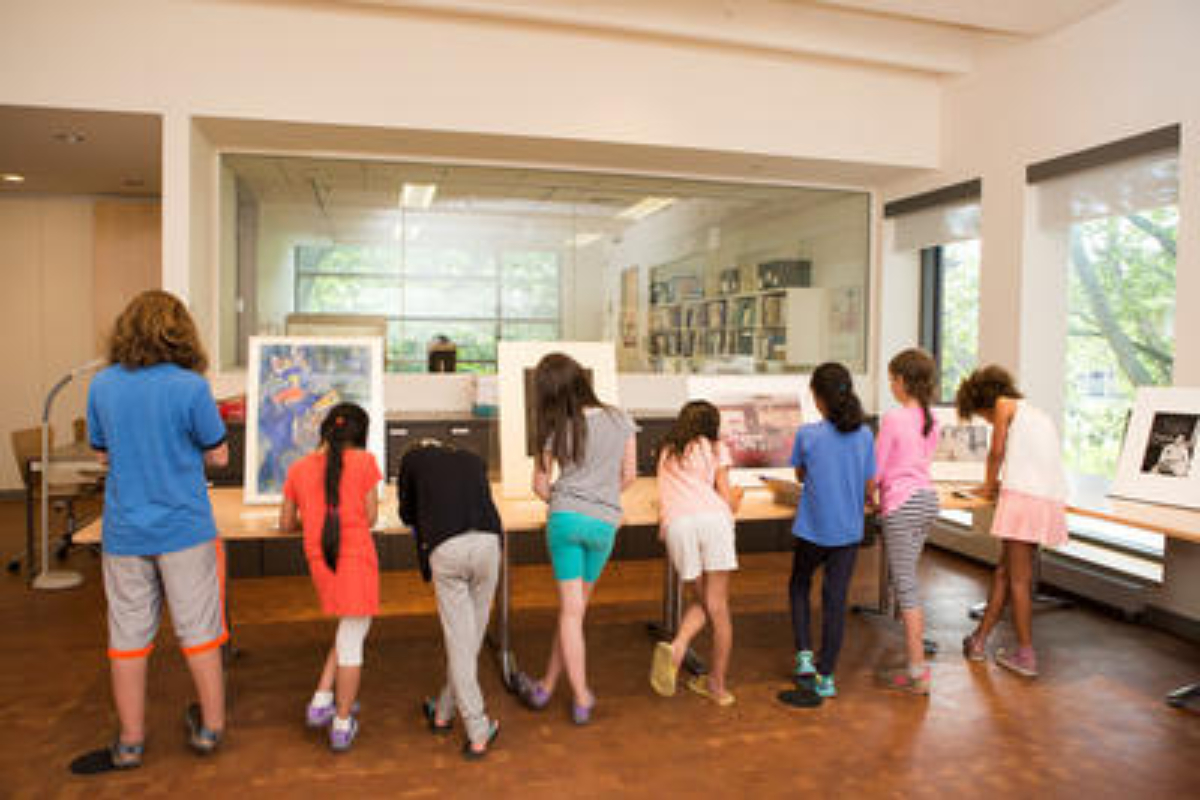
Teaching with Paper
Guest blogger Emma Cantrell is the 2014–2016 Brown Post-Baccalaureate Fellow in Museum Education at the Smith College Museum of Art.
This month, my colleague Gina Hall (Associate Educator for School and Family Programs) and I had the opportunity to teach a museum-based class as part of the Smith College Campus School’s June Session. Every afternoon for three weeks, sixteen enthusiastic 4th-6th graders come to the Museum to connect with art. Our students spend time in the galleries, investigate artists in the museum’s collection, and go behind-the-scenes with museum staff. Writing and art making are an important aspect of the course and the students have been exploring different media, including drawing, painting, and sculpture.
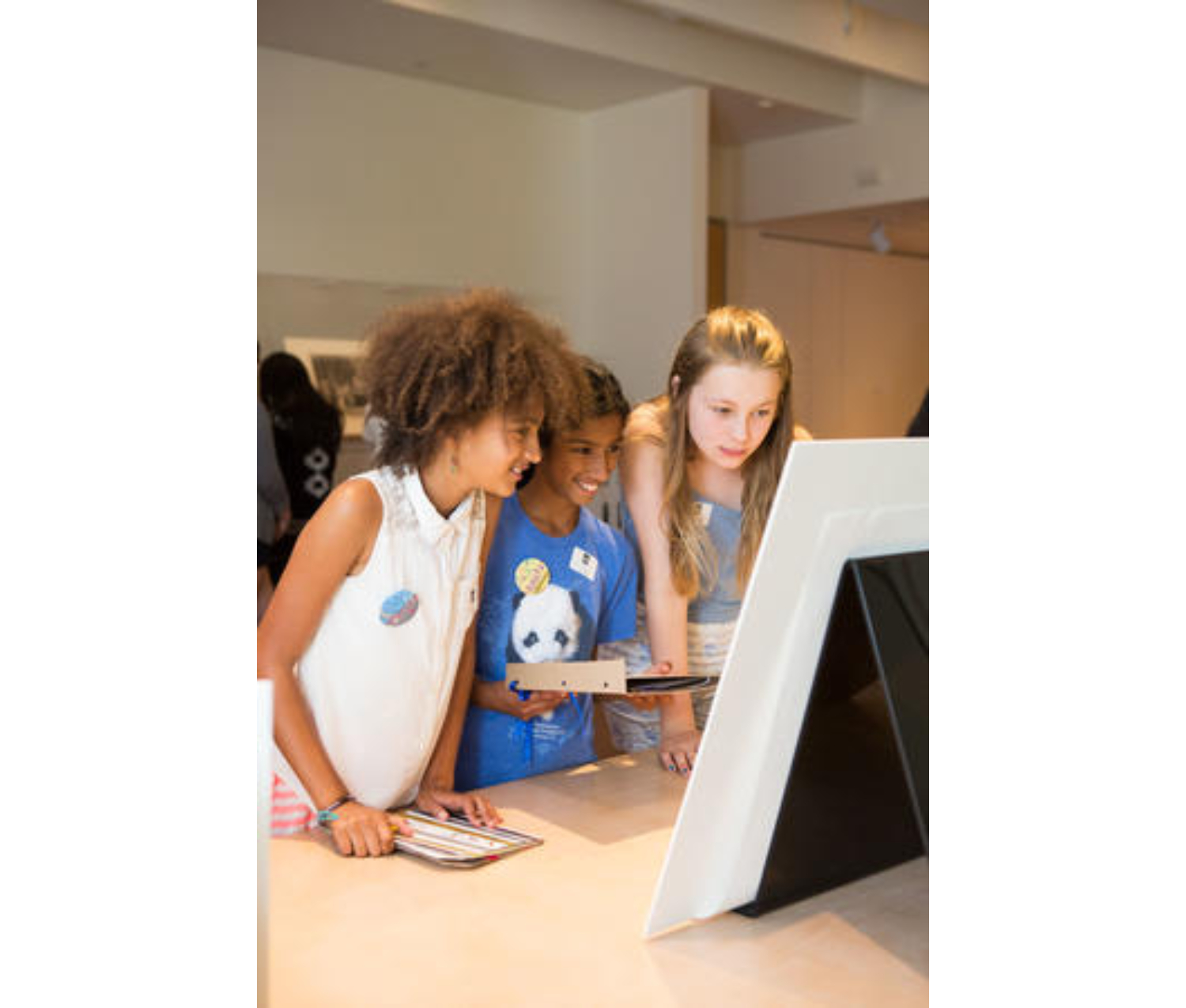
Photography by Lynne Graves
The goals for this short class were twofold. First, to engage our students with works of art in the Museum through participatory learning experiences intended to illuminate the stories of the works of art. Second, to foster the students’ sense of belonging at the Museum, to give them an increased connection to works of art, the galleries, and to Museum staff.
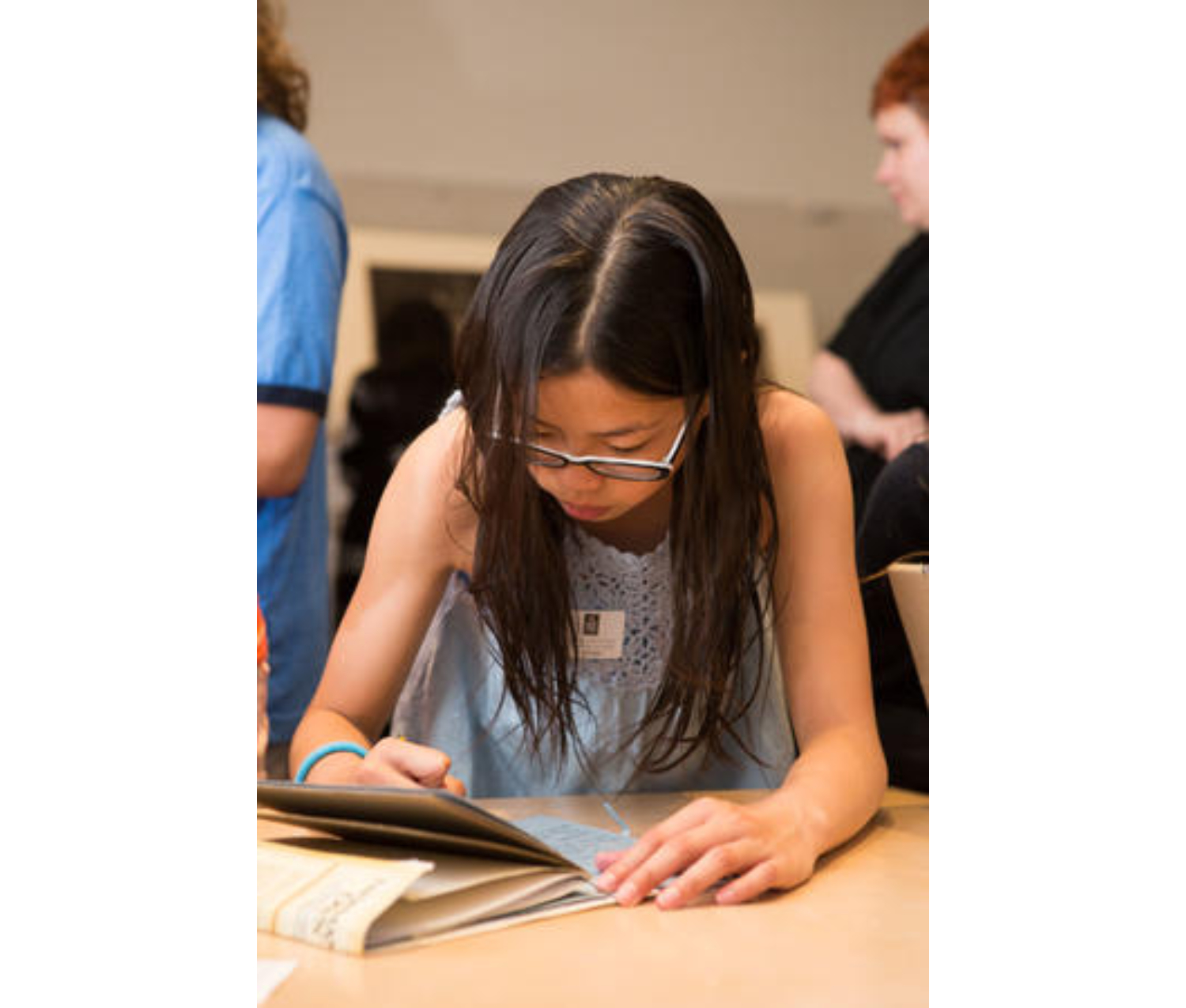
Photography by Lynne Graves
Because the lower level and first floor are closed for renovation, Gina and I have been challenged by a few parameters: our “wet” art studio space is under construction, limiting us to mostly in-gallery–and thus not too messy–activities, and most of the work currently on view is from before 1950. The SCCS audience is a sophisticated bunch of critical thinkers who (thanks to the proximity of their school on campus and a carefully cultivated museum-school partnership) are already fortunate to spend substantial time at the museum on guided and self-guided visits with their classroom and art teachers.
We want to make each day of “camp” feel exciting and special, exposing them to experiences that they might not have on an average school field trip. What is more, we are seeking to expose them to the breadth of works in the collection, despite limited works being on view. The Cunningham Center provided the perfect solution to this problem. With thousands of prints, drawings, and photographs to choose from, Gina and I sought the guidance of Henriette, the Cunningham Center Manager, in selecting 10 artworks to use for an activity we are calling “Start the Story.” She had great insight into images that might appeal to this audience, her daughter is one of the students’ enrolled in the program!
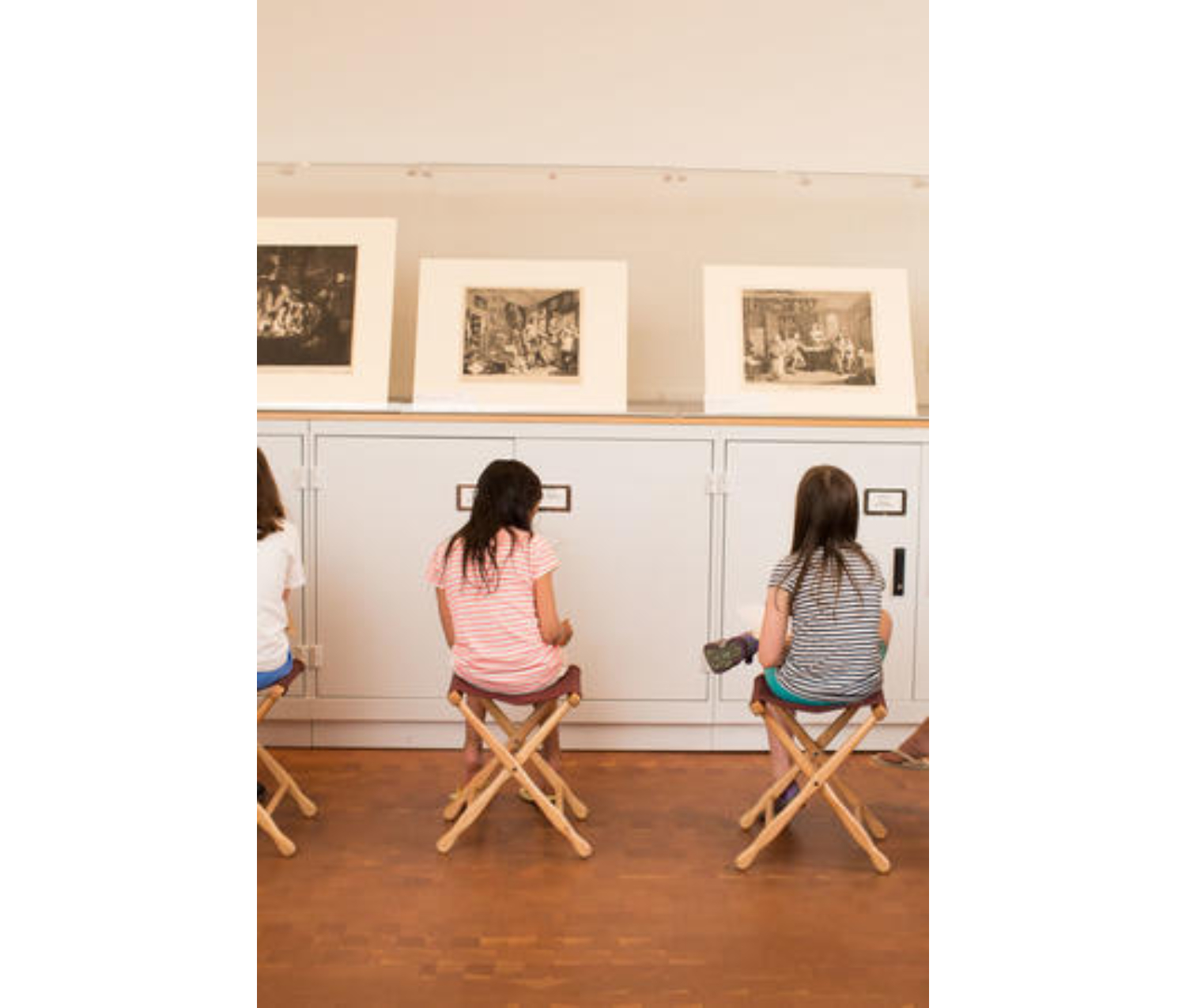
Photography by Lynne Graves
As the title “Start the Story” implies, our goal was for the students to use the artworks on view as a starting point for their own creative writing.The artworks we chose, ranging from Marc Chagall drawings to William Hogarth prints, are all playful, narrative works that we thought would appeal to our curious and thoughtful students.
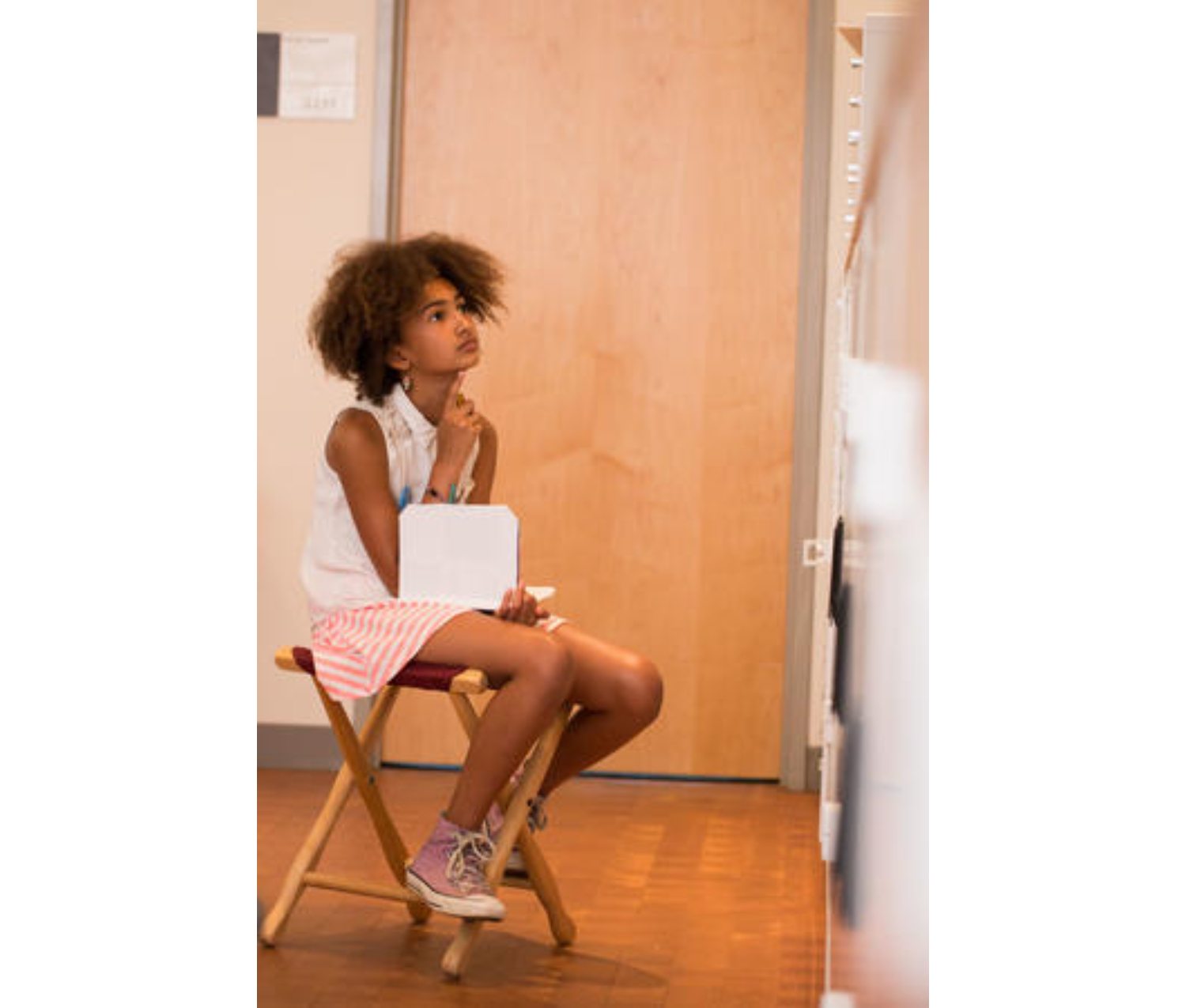
Photography by Lynne Graves
When the time came to visit the Center, we knew we had chosen well because the students were instantly drawn in – asking questions, making up stories, and eager to get writing in their journals. We began by asking that the students come up with a question that they might have about each of the unusual works as a warm-up, then each student selected just one artwork and got busy writing the story they “read” in their image of choice.
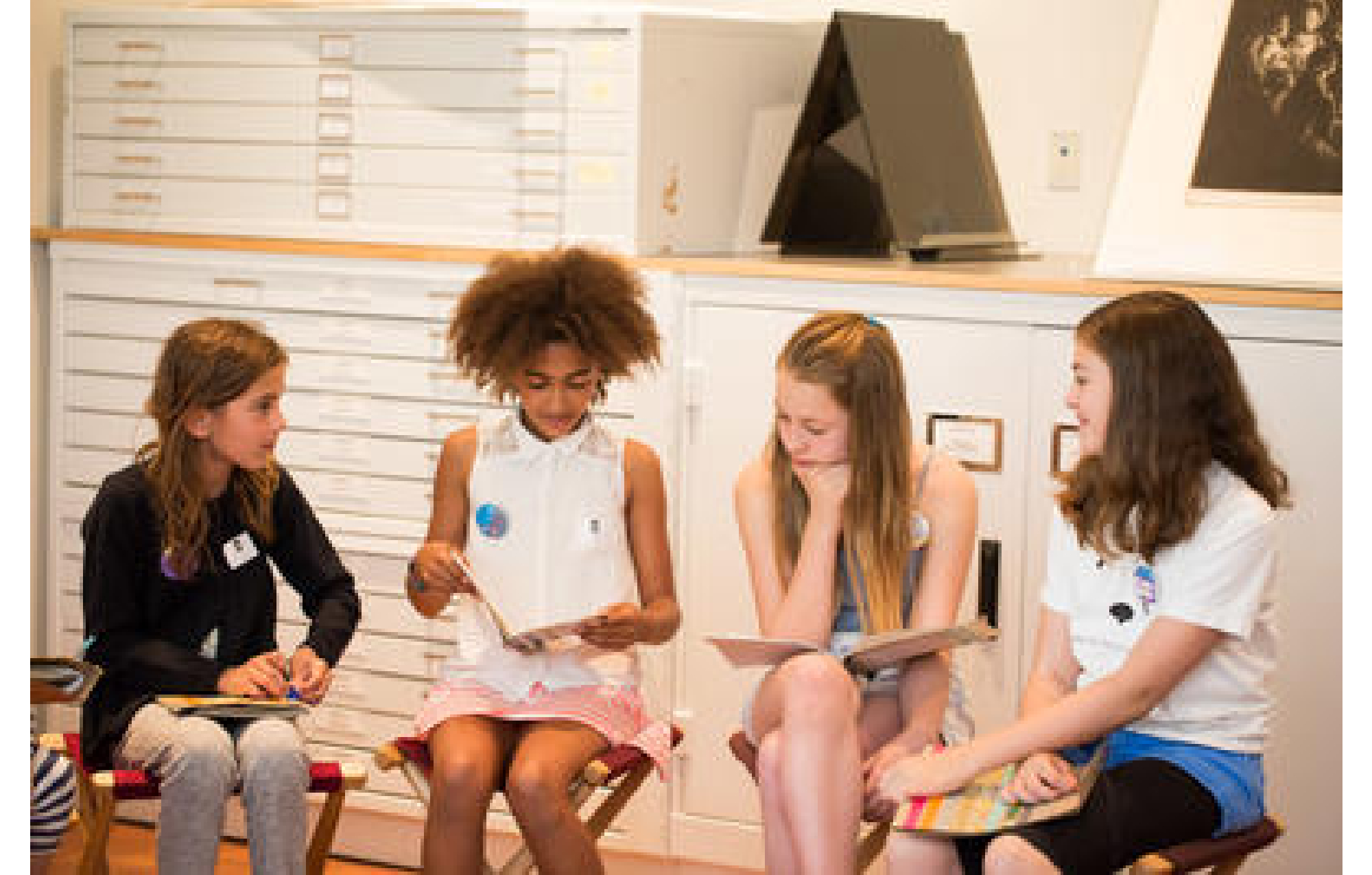
Photography by Lynne Graves
Each student took their own approach, some writing prose, others poetry. As they wrote, the room was quiet apart from the sound of pencil scribbling against paper, reflecting the deep concentration of the students. Some saw their image as the ending scene of a narrative, others developed a backstory to describe a character they saw. This open ended activity allowed each student to craft their own interpretation; to make their own meaning from our works on paper.
“It was a gray dreary day in Brooklyn. The street was cast over by a vast shadow, the wind started slow and steady as the many passers-by held it to a soft whisper. A harsh blow from the pipe of a brand new Pontiac tickled my neck and I coughed from the sudden burst of fumes. My wheels spinned and I glided, avoiding the many cars that blocked my way, zig zag down the many streets and my hair tickles the back of my neck, flying out behind me with grace.” - Belén, 5th grade
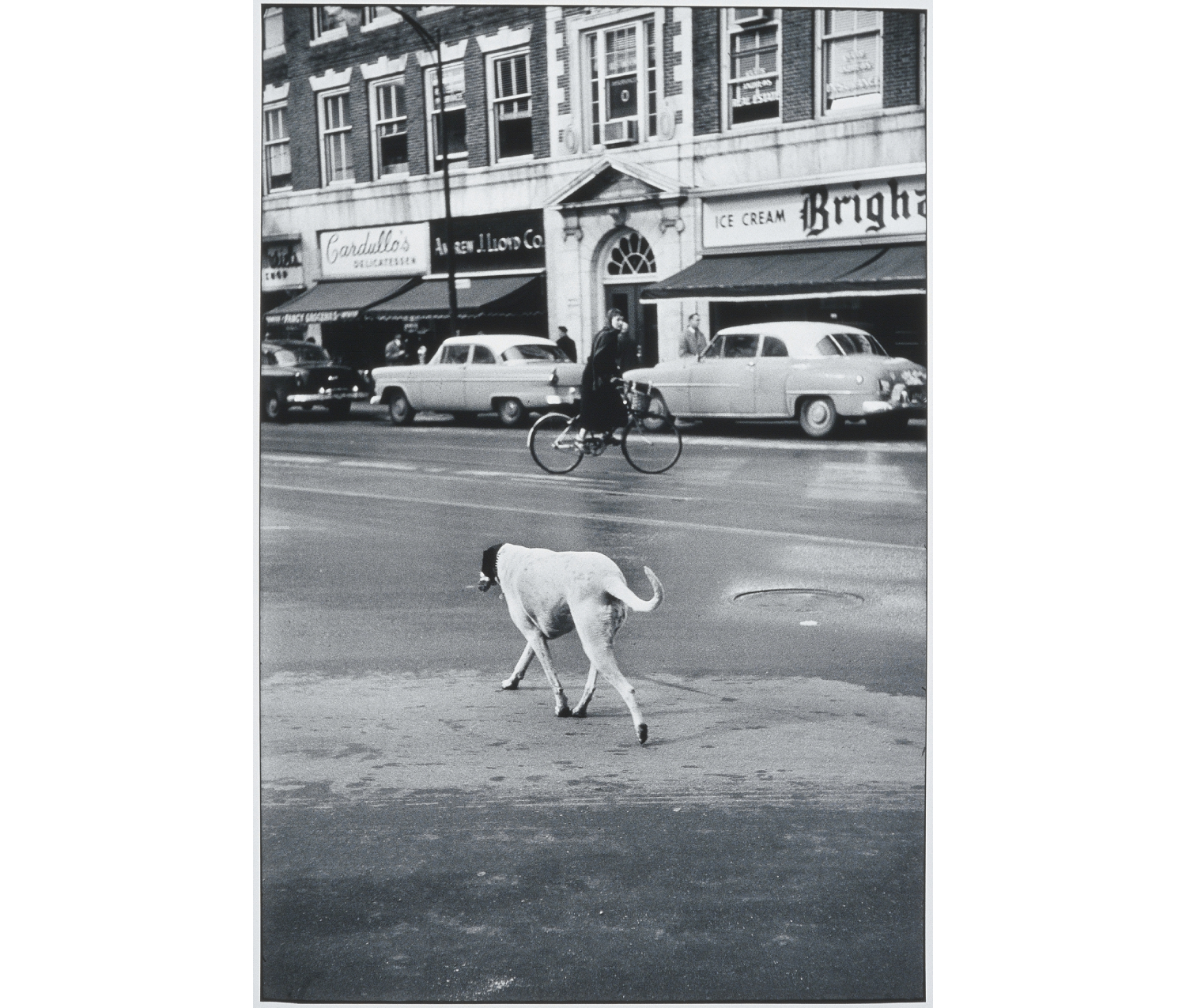
Elliott Erwitt. American, b. 1928. Cambridge, Massachusetts, 1958. Gelatin Silver Print. Gift of Lynn Hecht Schafran, class of 1962. Photography by Petegorsky/Gipe. SC 2001.21.9.